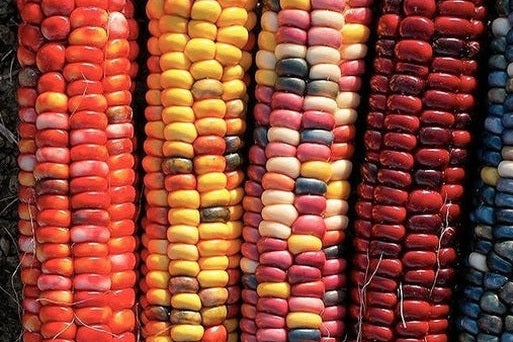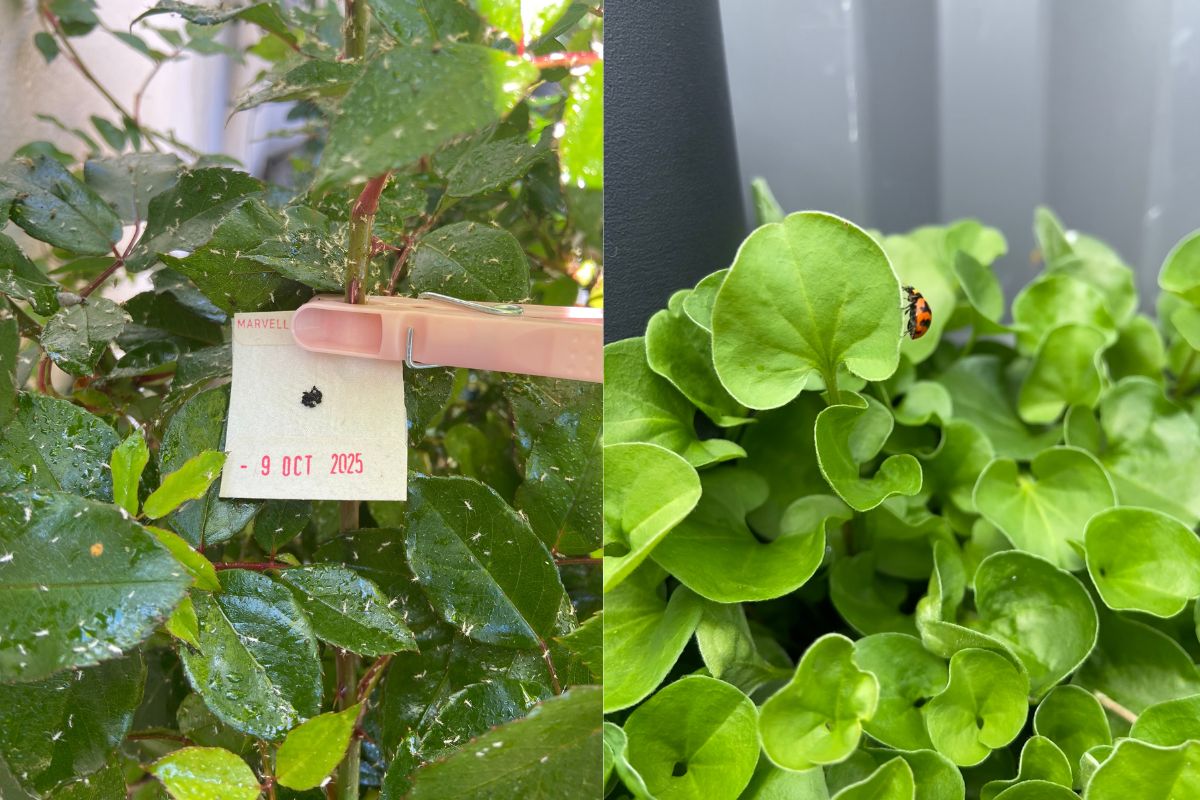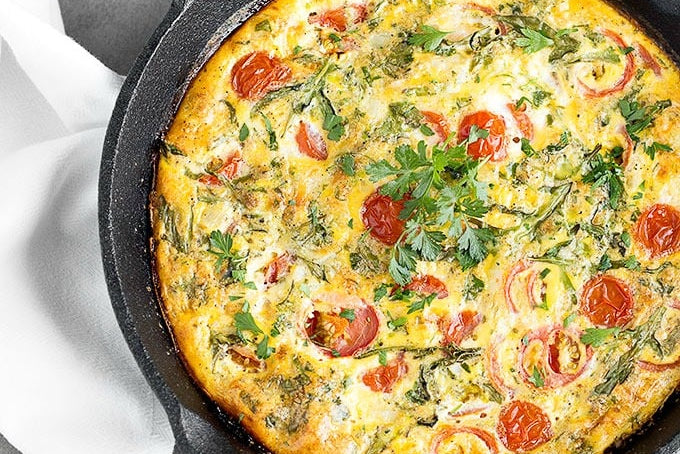Corn
The delicious kitchen staple we all know and love, corn is easy to grow at home and will yield cobs that are much more flavour-intense and nutrient-dense than what you can buy at the supermarket.
Corn was traditionally grown in Native American agriculture and comes in many more colours and varieties than we usually see in supermarkets. From the traditional Mexican Sweetcorn to the unusual and beautiful Multi-Coloured Aztec corn, there are many heirloom seed varieties that are well worth growing at home.
Details and Growing Information
|
Family |
Poaceae |
|
Scientific Name |
Zea Mays |
|
Common Names |
Corn, Sweetcorn, Maize |
|
How to Germinate |
Sow seeds 2-5 cm deep (deeper in warmer weather) directly into prepared, moist and nutrient-rich soil or in biodegradable pots. Plant close together to enhance pollination and cob production - roughly 20cm apart in rows about 50cm apart. Water well after sowing and then do not water again until the green shoots appear. |
|
When to Sow |
Spring. Corn needs warm soil temperatures to germinate. |
|
Growth Height |
Approx. 1.5 - 2m |
|
Position |
Full sun |
At Urban Revolution we currently stock several varieties of organic, heirloom, open-pollinated corn including Mexican Sweetcorn, Multi-coloured Aztec, and Chinese Mini. Stock of different corn varieties changes day to day - please contact us for current availability.
Mexican Sweetcorn is the traditional, delicious, golden corn - the one to go for if you're after the traditional staple corn. Multi-coloured Aztec and Chinese Mini are more novelty varieties if you're wanting to try something a bit different. These two types of cobs can be harvested early for eating. If left to mature the Chinese mini can be used for popcorn, while the Multi-coloured Aztec can be ground into cornmeal for breads and corn chips.

Image from our heirloom corn seed supplier, The Drylands Foundation.
Why Grow Heirloom Seeds?
Unfortunately, most of the conventionally-grown corn found in supermarkets today is from hybrid varieties that have been engineered to be super-sweet and more resilient to herbicides and pesticides. The produce you buy has nowhere near the same amount of nutrients and minerals as the traditional corn of our ancestors, and is often contaminated with man-made chemicals from conventional farming.
Genetically Modified (GM) corn is also a worry. 90% of corn grown in the the USA is genetically modified. Imported corn used in Australian-manufactured processed foods like biscuits and bread doesn't have to be labelled as GM. GM foods potentially pose a range of health risks, so it is best to stay away from these when you can.
Growing your own organic, heirloom and open-pollinated corn from seed means that you are growing the original, pure species (not a hybrid or GM) that has come from a natural, clean source. It also ensures that the delicious, fresh produce you harvest and eat is free from toxic chemicals and is of the highest quality.

An illustration of the Three Sisters Garden with corn, pumpkins and beans
The Three Sisters Companion Planting
A great way to grow corn through Spring and Summer is with a Three Sisters garden, where corn, pumpkin, and beans are grown together. Intermingling and working together, these three sisters grow better together than they would do alone, while also improving soil health, deterring pests and giving you a great crop yield.
The Three Sisters garden is one of the oldest examples of companion planting, traditionally used by ancient Native Americans. Here's how it works and how you can start your own three sisters garden at home.
How It Works
In the Three Sisters garden the corn grows straight and tall, providing the beans with a climbing pole to scramble up. The beans enrich the soil with nitrogen which the corn and pumpkin need (as they are both heavy feeders) and also offer extra support for the corn in the wind. The pumpkin or squash sprawls over the ground, acting as a living mulch and providing shade to keep the soil cool and moist in the Summer. The vines also suppress weeds and their prickles deter pests.
These three plants have differently-shaped root structures and their roots extend to different depths in the soil, so they are not competing with each other for nutrients. This means they are very happy living in close quarters with each other.
When harvesting the corn, beans, and pumpkins, the nutrients that each food offers complement each other perfectly to create a balance of protein, carbohydrates and minerals for the human body.
Together, these three sisters are the ultimate companion plants and form a great veggie garden design.
There are several variations of the three sisters that you can use. Corn, beans, and squash (usually a kind of pumpkin) are the traditional sisters, but you could also choose sunflowers or amaranth in place of corn, a climbing pea (such as sugar snap) in place of beans, or zucchini or a melon instead of squash.

The Three Sisters Garden with corn, beans and pumpkins
How To Grow a Three Sisters Garden At Home
Prepare a nutrient-rich, moist garden bed in full sun to plant your seeds in Spring. You'll want a space that is at least 1.5m wide for your three sisters and you may want to add compost, aged manure, rock dust, or other enriching soil inputs to give your Three Sisters garden a strong, nutritious foundation. Corn and squash are both heavy feeders and need lots of food to thrive!

Jo's small Three Sisters garden of corn, beans and butternut pumpkin.
The traditional Three Sisters garden has a circular design, with corn forming the inner ring, beans dotted around each corn stalk, and squash spaced in a wider circle around the corn and beans. We'd love you to try this design if you have the space, or you can adapt the design to suit a rectangular garden bed. If you are wanting a large Three Sisters garden, plant multiple circles or blocks with space in between so you have access to all parts of your garden. Once the sisters grow to their full size, they can get quite intermingled and difficult to reach through to harvest!
When planting from seed, the sisters are sown a couple of weeks apart so that they start to interact when each of them is ready:
- The corn is planted first to give it a strong start before the beans start climbing. Once the weather warms up and you have prepared a nutritious garden bed in full sun, take around 8 corn seeds and sow them directly into moist soil in a circle so that the seeds are 15-20cm apart. Pat the soil down around the seeds and give them a good watering.
- Once your corn stalks are at least 15cm tall (this will take a couple of weeks), it is time to plant the beans. Evenly space four beans in a square around each corn stalk and push them into the soil until they're around 4cm deep. These should sprout within a week and grow relatively quickly. Alternatively, you could germinate your beans in a seedling flat or in biodegradable pots (such as newspaper pots) to protect them while they're young, and transplant them around the corn. This is a good option if you are worried about pests gobbling up your young bean shoots.
- A week after your beans have begun to climb the corn, take 6 squash seeds and sow them in an evenly-spaced ring outside the group of corn and beans. Keep an eye on your squash as the vines begin to grow and encourage them to grow inwards towards the corn and beans by repositioning the vines.


Examples of the Three Sisters Garden
There are many different ways you could design your Three Sisters Garden, and most would work well. As long as the corn is planted close together (15-20cm apart) in blocks so they can pollinate each other, the beans are planted around each corn stalk so they have an easy support to climb, and your squash is growing towards the corn and beans, your sisters should be very happy.

Starting a Three Sisters Garden
It is quite amazing how these three sisters live in harmony and perfect balance together. The corn, the oldest sister, is the supporter. The beans are the nurturing sister, and the squash is the protector.
We also love that this garden design is adaptable to any space (from a smaller 1.5m space, to a large area with multiple blocks of the Three Sisters layout) and works with a range of similar crops, not just the traditional three.
Late spring is the perfect time to start your Three Sisters Garden so get out there and get those sisters growing! Chat to us any time at Urban Revolution if you need any advice for choosing your sisters or designing your garden layout.
Happy growing!

Corn, pumpkins and beans growing in harmony
Resources & Further Reading
Conventional corn agriculture, sustainability, and health:
https://www.ucsusa.org/resources/hidden-costs-industrial-agriculture
https://realfoodforager.com/why-i-would-never-eat-conventional-corn/
https://www.elle.com/beauty/health-fitness/advice/a12574/allergy-to-genetically-modified-corn/
Three Sisters gardening:
https://goodlifepermaculture.com.au/three-sisters/
https://permaculturenews.org/2017/05/26/sisterhood-tradition-three-sisters-companion-planting/
https://www.mybluprint.com/article/three-sisters-garden-layout






Leave a comment (all fields required)